Media Planning’s Next Big Change Agent: AI

Why This Matters: Planners and strategists a have front row seat when it comes to knowing what advertisers need in an evolving media business.
Artificial Intelligence is coming to the media and advertising world, and the changes that have roiled the industry are only going to continue, according to some of the top planners and strategists at media agencies.
Media planners and strategists make the big calls on the best way for advertisers to reach their target audiences. Their jobs have become more complicated as technology has given consumers more choices in where and how to view content, as well as the ability to skip commercials they don’t want to watch.
The technology has also created opportunities to reach consumers in a more targeted way as research and other tools have improved.
In responses to questions about key industry trends, planners who fielded questions for this report saw artificial intelligence affecting the way decisions are being made in the media business and other industries. They also said that the array of new data available to them and the promise of more accurate ways to measure the impact and effectiveness of advertising were changing how they worked.
Here’s how B&C’s panel of key executives is looking at what’s happening in the media and advertising business.
What are the most disruptive forces affecting the advertising business right now?
Broadcasting & Cable Newsletter
The smarter way to stay on top of broadcasting and cable industry. Sign up below
Dan Eckrote, managing director, Mindshare: As both an advertiser and consumer, the opportunities that AI and machine learning present are very exciting, yet they’re something that we should be careful with at the same time. The amount of things that digital algorithms influence is vast — from our music to meals, and even finances to friendships. This has opened the door to scaled marketing opportunities (apps, services, media planning and buying, etc.), but we have to balance algorithmic machine learning with humanity, to still allow emotions and culture to influence the decisions we make. Technology is extremely effective in enabling scale, efficiency and effectiveness, but it’s critical to ensure there is still a human lens applied.
Elyse Johnson, executive director, content collective, Heart & Science: Collective mistrust on both the demand and supply sides of the business. We’re all using ‘transparency’ as a synonym for ‘we don’t believe you.’ It’s become part of the consumer-facing dialogue now, as well, when it comes to privacy, and it’s forcing disruptive self-reflection across the industry.
Renee Menard-Badigian, account director, MediaCom: The rapid rate of technology advancement is one of the most disruptive forces in advertising right now. With ad tech evolving so quickly, we need to be not only media strategists, but also data strategists. We need to be experts in understanding various data sources and how to use this information to inform our media plans. We need to understand the connectivity across various ad technologies to ensure our campaigns are set up for success. And we need to skillfully interpret data to unearth insights and optimize our campaigns.
Nicole Parros, group director, OMD: The amount of devices and platforms, accompanied by the vast offering of content, creates very fragmented viewing habits. Although habits are constantly changing, linear video is not dead, overall video consumption is actually growing exponentially each year. Most consumers are consistently multitasking and consuming media on more than one device throughout the day, which makes it very difficult to break through the clutter and grab someone’s attention.
Shaun Rudy, senior VP/group director and strategy lead, Kraft/Heinz, Starcom: Artificial intelligence and machine learning are absolutely the biggest forces over the long haul in advertising and, frankly, every single sector or business today. Everything from propensity modeling (identifying high prospects or anticipated behaviors) to predictive analytics (predicting possible future purchase trends) will fundamentally change how brands go to market, from the product or service pipeline, to commercialization and tracking of success, to the future business models brands or companies may identify that they have a right to play in and win.
In the more immediate term, affecting today and next year, Generation Z is the most digitally and data literate generation ever. This has a profound effect on marketing. As we call ourselves the experts, Gen Z is full of self-made entrepreneurs who have been building their own brands, themselves and their entire lives through social media and content creation. This will be challenging for marketers beyond just the content they create, whether it’s what types of influencers they associate with to whether they have a point of view on privacy. Today, if you don’t have a point of view on privacy as a company, you are way behind your future consumers. On the flip side, I have never been more impressed with the crop of new, junior talent to come out of school and join our field — both client, agency and otherwise. As someone who has prided himself with being in our profession for over 15 years, it’s also humbling to say the least.
Kyle Russ, VP, strategic planning, Blue 449: With disruption everywhere and exponentially increasing, it can definitely be overwhelming. At the end of the day, disruption is propelled by the speed at which technology and consumer expectations evolve — especially demand for personalized, valuable consumer experiences. So, if we needed to boil this down to three main disrupters, it would be speed of change, the need for consistent omnichannel experiences (and performance) and everything needing to be contextualized specifically to the consumer. What an agency needs to do is keep up with all this change and help clients navigate it to move their business forward.
Gene Turner, executive VP, chief of Horizon Next: One of the most disruptive forces in advertising today is the growth of ad-free environments, such as Netflix and Amazon Prime, and their popularity among younger consumers. Another disruptive theme is the consolidation of digital media to key partners that could create even bigger ‘walled gardens’ and potentially affect the measurement landscape that we have been operating within. The ability to leverage media to reach consumers and effectively measure performance across all touchpoints is critical for effective decision-making.
Sofia Waldow, senior VP, managing director, Carat: This is a really exciting time to be in advertising and having been in the industry for quite some time, I can honestly say the fervor and energy right now is very inspiring. Part of this is fueled by audience demand which is paving the way for innovation, sometimes incorrectly categorized as disruption. I think that any company, product or service that empowers consumers to conduct ordinary tasks in extraordinary ways can be considered disruptive. I’d consider voice-enabled technology at the precipice of disruption because I think we have just begun to scratch the surface as to how we as an advertising community embrace and leverage the power of voice.
What can you do in planning a campaign to combat consumer avoidance of your client’s ads?
Eckrote: Ad and banner blindness is rampant in this industry, but there is a relatively easy measure to help combat it on behalf of clients — by simply being a consumer yourself. As you scroll through your Instagram feed or flip through the television, which ads do you pay attention to? What connects with you and gets your attention? For me, it’s almost always an ad that either provides a tangible utility, or one that is so intrinsically tied to my mindset that it adds to the moment.
The first (utility-based media) can take many forms, but generally provides a specific value or experience to you as the consumer. Some of the best recent examples I’ve seen use smart technology (such as activations with Amazon’s Alexa) or even out-of-home to provide unique opportunities.
The second (connecting to your mindset) is by no means an original concept in advertising. But as advertisers become more aware of the importance of connecting with cultural moments, combined with advancements in applying technology to help optimize creative for different audiences, there has become an increased ability for brands to build relevance with their customers and avoid ad blindness. American Express has done an exceptional job at tying ads and messaging to the precise moment. For example, our creative partners at McGarryBowen conceived a video asset with a dynamic tagline, which enabled us to work with them on the create dozens of ads that literally tied to the programming and moment consumers were watching (i.e. during AMC’s The Walking Dead or ESPN’s SportsCenter). We even took this concept to out-of-home, using digital taxi tops to dynamically serve messages based on your exact location, featuring nearby merchants or neighborhood names.
Johnson: Build mutually beneficial content experiences that enhance, not disrupt, a consumer’s experience. It’s why I love working in content marketing.
Menard-Badigian: Two words: Context and content. Context is critical in advertising. As eye-catching as a splashy new ad format can be, a consumer is going to be much more receptive to your message when the message is relevant to content they are consuming. Compelling content that is relevant for the environment completes the one-two punch. The increase in native ad spend is a great illustration of this.
Parros: Understanding who your target audience is, and what their media consumption habits are, is key to success. Pairing consumer insights with contextual placement and relevant creative will help create meaningful connections. OMG’s proprietary targeting solution, Agile ID, allows us to create a unique identifier across platforms in order to identify that trifecta and create media plans that resonate with individuals.
Rudy: Certainly, measures like having brand safety levers in place will help, but compelling content that matters to people is the only way to keep them engaged. I’m proud to work with CPG clients who have been at the forefront of data-driven marketing for quite some time. The best advice I would offer to a brand that’s hyper-focused on combating ad avoidance is to know your brand’s purpose and story and live it throughout. This may manifest itself in how you plan traditional media with traditional ads, or how you create long-form content that people who actually seek out and care to watch.
Russ: Our job is to understand and anticipate what’s next, and not to rely on what has historically worked for a client because the landscape and consumer behavior are always changing. The ability to lead with content is key, which means we need to be in constant conversation with our clients around the value of content and how it can be a ROI driver. With all of this, the use of data is essential — data has to inform where and how we deliver new content and new brand experiences to create the most impact.
Turner: Consumers are inundated with advertising and commercial avoidance is a reality that is not new to today’s marketplace. A key to avoidance is relevancy, and we spend a lot of time understanding people and their motivations, behaviors and receptivity to enhance the relevancy of our approaches as a way to better engage audiences. By having more quality data and better data-powered technologies available to us, we are able to identify and understand segments in order to learn more about where and when they are receptive.
One area we have found impactful in connecting with consumers is understanding receptivity by time of day for each audience and aligning plans to key moments throughout their day. Close collaboration with our creative partners on the alignment of messaging by audience throughout the day has proven to positively impact engagement rates to campaigns.
Waldow: If we plan from a true consumer-first mindset and really focus on who we are designing our communication strategy against, we can hope to create an emotional connection with people and therefore break through. This can come in many shapes and forms, such as branded content developed from the voice of a trusted advocate, a collaboration with events or stunt marketing, or in a traditional manner where a brand supports programming that has a high affinity within their consumer base. It’s about finding a human truth or trigger that will resonate with our consumers and creating from there.
Attribution is a hot subject right now. How much can you know about how well your campaign is working, and what indicators are most useful to adjust a campaign to make it more effective?
Eckrote: The value of measuring true attribution heavily varies based on what type of behavior you’re expecting from your consumer. Is your KPI simply a website visit? Should they submit a lead? Do you want your audience to complete a purchase?
The challenge for marketers is that often channels are measured in silos, with attribution only based on that specific media channel, and not taking into account the full media ecosystem and external influences (press, word of mouth, research, etc.). The most effective campaigns that I’ve seen leverage a multi-touch attribution approach which uses machine learning techniques to attribute fair credit to different touch points along the consumer journey. This is used to optimize investments and forecast different scenarios. The best outcome is if you can measure all the way through to the final conversion — whether it’s a vehicle sale (using DMV or first-party data), a CPG purchase (working with location partners in-store), a credit card application and more.
Johnson: We establish pre-campaign KPIs so we understand what the indicators are, before we start, to understand if we’re pacing toward success. For content-driven campaigns, we’re looking to understand indicators that show that 1) consumers are enjoying the content, and 2) the brand presence is memorable and amplifies the experience.
Menard-Badigian: Today, we have access to so much data; the challenge can be remaining focused on the right data points for the ‘thing’ we are looking to evaluate. At MediaCom, we are ‘Systems Thinkers,’ so this is precisely where we begin. By mapping out how the full system connects — paid, earned and owned media, brand metrics, site, sales — we can best understand how to construct our plans for the most effective holistic outcome. We identify the points of linkage between media and outcome, uncovering areas of leakage or opportunity, and establish the levers and leading KPIs [key performance indicators] that we can use to optimize our campaigns in-market.
Parros: Every campaign is unique and therefore requires a unique set of success metrics and optimizing KPIs. When we plan a media campaign, we identify the business, marketing and media objectives, which ultimately drive the measurement approach as well. The measurement approach ties it all together to ensure you are assigning the appropriate success metrics and optimizing KPIs based on your specific campaign goals.
Russ: Being able to uniquely identify where consumers are — whether they are browsing online or shopping in-store — is essential to attribution. With this, working with partners who can use third-party location data and purchase info can give you a robust picture of attributable sales. By examining sales and traffic data, we can identify barriers to break through with engaging media in order to better serve consumers.
Turner: When a campaign is designed properly, with a clear and strategic measurement plan, we can glean a lot of information about the success of the campaign. This begins by outlining campaign objectives — specifically, which key performance indicators (KPIs) are to be monitored for measuring effectiveness. For testing into new environments, dynamic match market testing is an invaluable tool for understanding incrementality and delivering quick answers to questions around efficiency and effectiveness. For ongoing campaigns, looking at historical campaign delivery and longitudinal KPI data is an important source of information for deriving in-campaign optimizations through probabilistic modeling. In both cases, historical data first party is ideal for establishing baseline and understanding campaign incrementality.
Waldow: Attribution is great, but unfortunately existing data sources are not necessarily robust enough to truly represent an end-to-end campaign in its entirety. We’re limited in the information we get back and the ‘real-time’ decisioning that goes into the optimization of our plans. The best indicator of success is sales lift, but the opportunity to optimize against this KPI is dependent on the duration of the campaign and your access to accurate sales data. Another important indicator is looking at our cost per lead if it’s a campaign that demands an action. Ultimately, effectiveness is a moving target, so it’s important to tailor our success indicators based on our business objectives and recalibrate as necessary once live.
What metrics that you don’t have would be most useful in devising strategies and planning campaigns?
Eckrote: It’s not so much about one particular metric, but rather, as the media landscape continues to fragment at a rapid pace and consumers are engaging with more media than ever before, that fragmentation in and of itself presents new challenges for brands to effectively plan and measure.
It’s imperative that marketers use a single source of truth to plan, activate and measure. There are many competing planning and measurement methodologies available, with each having its own pros and cons. But we, as agencies, must help get clients to one set of business KPIs, with a cohesive marketing and data system to help optimize those KPIs; that’s something we focus on with our brands.
Johnson: The Holy Grail is always real-time purchase changes when campaigns are in-market. More realistic is more consistent sales qualitative and quantitative measurement across partners and third-party providers.
Menard-Badigian: I would love to see more intelligent qualitative data out there. Much of the behavioral data that exists today is survey or focus-group based. While this information is valuable, it is exciting to see more intelligent tools emerging that can either validate or uncover similar types of insights. For instance, leveraging digital and offline data via a DMP to uncover audience attributes or eye tracking technology to assess creative engagement are powerful tools that can be used to influence strategy and planning.
Parros: Measurement across linear and digital video, in order to justify our clients’ investments, is still the talk of the industry. There are so many measurement sources; it’s important to know how capability and functionality differs across the range of options. [NBCUniversal] is looking to make strides in this space with the launch of CFlight and an ambition to keep up with the fluidity of media consumption.
OMG has also introduced the Omni TV/Video Planning/Measurement module to optimize cross-platform targeting and measurement of video campaigns across linear TV, online video and OTT/CTV [connected TV]. The module, a component of the Omni people-based marketing program, is enabled by household-level smart TV data that provides second-by-second household-level granularity of TV exposure; this exposure data can be matched directly (via blind third-party matching) to both digital exposures and to outcomes (from TV tune-in to product purchase data) to understand the effectiveness of our clients video campaigns across platforms.
Continuing to base video measurement on aggregated small-panel TV ratings — which provide only shadows of actual exposure and no mechanism for connecting linear TV data to other digitally-delivered platforms — is not a path that will ever enable a true understanding of cross-platform behavior and campaign effectiveness; the sample sizes are simply too small and the number ways messages can be delivered is simply too big.
We believe that getting to cross-platform, impression-level exposure data against specific individuals is the desired end state to best support the future of advertising; our efforts with Omni and household-level data represent significant steps in that direction.
Rudy: A big industry gap that would be the Holy Grail for us would be having metrics that measure how long-term growth and equity-building efforts ultimately translates into sales.
Russ: It would be great to see a complete omnichannel view of the whole consumer journey in one place. There is a need for a ‘do it all’ service or partner that can combine all the channels together when it comes to measurement and reporting. How can we combine online and offline, across all channels, seamlessly and accurately to break through the ‘walled gardens?’
Turner: We have access to a good deal of data for our clients and the more robust and granular it is, the more sophisticated our strategic approach can be. While we always seek first-party (customer level) data, it is not always possible to attain. However, this data is a critical part of the planning process as it puts us in a position to methodically define segments to activate.
Waldow: Real-time emotional metrics would be valuable in understanding success. Another plus would be attention-focused metrics that move beyond reach, frequency and GRPs [gross ratings points] to the softer indicators that more accurately predict business outcomes.
How do you allocate client money between traditional linear TV and newer advanced advertising techniques, including data-enabled targeting, programmatic buying, over-the-top and set-top on-demand?
Eckrote: Our team puts an emphasis on investing within advanced video techniques while still maintaining a focus on traditional linear TV where we can achieve efficient scale. The balance between traditional and advanced tactics is heavily dependent upon the brand’s goals. Some of the main factors we consider are reach, messaging and cost-efficiency.
For a branding message that is intended to reach a general population, linear TV is still king. For campaigns that are meant to reach a more niche audience (especially if strong first or third-party data available), or if there is a specific objective, then using addressable channels with particular data become the priority.
Johnson: We look at the consumer first, and allow the consumer we’re trying to reach to dedicate program, network and environmental mix. That, combined with our brand goals, drives how we’re allocating budgets.
Menard-Badigian: The strongest plans will take multiple views into consideration. Top-down approaches like media mix models are valuable for guiding broad budget distribution across channels. A bottom-up approach, typically driven by multi-touch attribution, delivers more granular insights that can drive tactical allocations. However, it is important to ground this in the media nuances and realities of our intended audience. To provide a simple illustration, if our video (TV plus online video) demo is adults 18 to 49, we may want to have a higher OLV delivery in A18-34 over A35-49 to deliver a more consistent total video reach against our A18-49 audience.
Parros: Omni is Omnicom’s people-based precision marketing program that delivers a first-of-its-kind, single view of the consumer that can be dynamically tracked and shared across all marketing practices. Omni transforms the way Omnicom teams work, collaborate and deliver value, from insights generation to audience building, channel planning, creative development and message distribution. All of the activities are continuously measured and optimized with attribution tied to client performance at every step of the consumer journey.
Rudy: Simply put: screen-agnostic. It takes the right person, right message, right time and right cost.
Russ: We look at media consumption trends and time spent with all channels across all of the different audiences. It’s all about following the eyeballs, and sitting at that cross-section of data and insights to create actionable ideas. How can we effectively balance being ‘smarter’ with advanced TV versus being efficient through basic linear television? We have a dedicated video team that helps us stay ahead of the curve and explores evolving consumer behaviors to make bold, strategic planning decisions.
Turner: The allocation of budgets is driven by a deep understanding of our audience and their consumption habits, business goals, and learning from historical campaigns. For many audiences, linear TV still commands about 75% of time spent with video, but it’s on the decline, while OTT and mobile are growing significantly. So, it is critical to ensure those platforms are supported proportionally. FEP [full episode players], OTT, VOD are part of all our buys at this point because people are increasingly consuming content across platforms.
We spend a significant volume of dollars in the direct response market (which is the original ‘programmatic’ marketplace) and all of our buys are data-enabled; whether it’s leveraging our proprietary brand ratings tool on the front end, or some of our advanced analytics models on the back end.
Waldow: We start with our goal and then plan from there. We take audience behaviors into consideration as well as our content formats. We think about what it is that we are communicating and the business purpose. And finally, we leverage proprietary agency tools as well to help rationalize our recommendations. There truly isn’t a one-size-fits-all approach to the split between linear and advanced TV allocations, because TV viewing isn’t binary. And that’s how we think about it — not as an either/or, but rather a complementary allocation strategy.
DAN ECKROTE
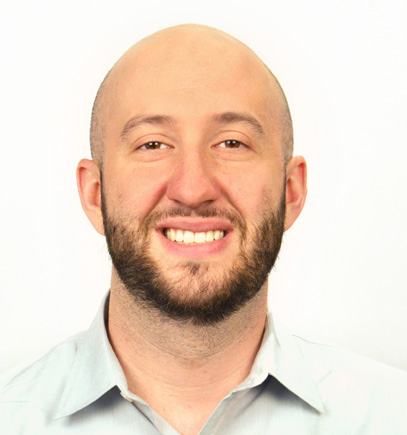
Title: Managing Director, American Express account, Mindshare
College: The College of New Jersey, Ewing, N.J.
Why Advertising: Growing up, Eckrote wanted to be an architect, but discovered media and advertising while taking marketing classes. “I’ve always love to use both sides of my brain, the analytics side and the creative side,” he said. “Instead of building structures like I always thought I wanted to growing up, I’m now building sound advertising campaigns.”
First Job: After doing some freelance graphic design, Eckrote’s first agency job was as a digital assistant at Mindshare. In that job, he did both planning and buying. “I’ve been a lifer at Mindshare,” he said. “I love how they’ve developed the culture here over the years.”
Recent interesting campaign: American Express recently launched a global campaign aimed at customers whose personal and work lives are intertwined. The platform is called “Don’t Live Life Without It or Don’t Do Business Without It.” Eckrote’s group looked to spread the message in emerging spaces, and one of those spaces was direct-to-consumer video when ESPN was launching ESPN+. American Express sponsored the launch and gave consumers 30 days of access to the streaming service as a way to help them with lives so busy they need to watch video on the go. As part of the campaign, Mindshare also helped update the on-billboards Amex buys on networks including ESPN, AMC, Discovery, HGTV and Food Network to make them more contextually relevant. Between The Walking Dead and Fear the Walking Dead, billboards carried messages such as “Don’t apocalypse without it.” The campaign is still in its early days, but Eckrote said it is generating very positive social media sentiment.
Favorite TV show: He balances futuristic dramas like The Man in the High Castle and Black Mirror with comedies like Portlandia, Seinfeld and The Office.
Favorite app or gadget: Eckrote recently automated his apartment using Amazon’s Alexa to activate everything from his lights to his TV to his sound system. Hulu recently added voice control through Alexa. “You don’t even have to pick up your remote to watch anything on Hulu,” he said. “I love that.”
ELYSE JOHNSON
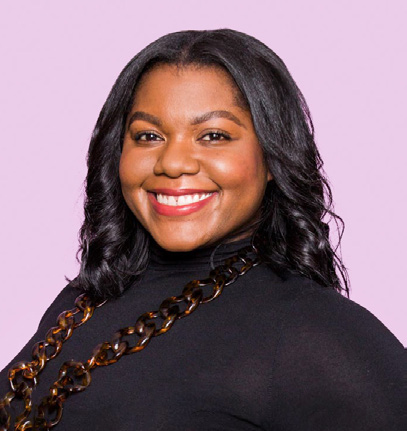
Title: Executive Director, Content Collective, Hearts & Science
College: University of Southern California
Why Advertising? “I really didn’t want to work in a career where I had to wear a suit every day,” Johnson said. “I wanted to work in entertainment, but the idea of working at a studio or a network or record label wasn’t as interesting to me as figuring out ways to do things that piqued my strategic interests.” Media agencies were building branded entertainment units, so that became a career path. “I kind of fell into these roles and fell in love with it. And I still didn’t have to wear a suit.”
First Job: Sales planner at Fandango. “I was employee No. 40,” she said.
Recent Interesting Campaign: Johnson worked on one of the highest-profile TV integrations of the year, “The Talk,” which paired Procter & Gamble with an episode of ABC’s Black-ish. “It’s probably my favorite thing that I’ve worked on in my career, Johnson said. “It was really talking about, especially in our current climate, the biases African-Americans face while navigating what is inherently just an unfair world.” Black-ish gave P&G an opportunity to put a real face on a fictional story that was being created in the commercial world. ”I don’t know that we could have found a better partner to start more authentic conversations for consumers than ABC and Black-ish,” she said.
The goal of the campaign was to grow P&G’s authenticity with African-American consumers. The company saw a 1% increase in sales among African-American households, a big gain for a company the size of P&G. The campaign also generated 2 billion impressions and over 90% favorable sentiment It also won a Grand Prix at the Cannes Lions Festival.
Favorite TV Show:Married at First Sight. “I really don’t watch much reality, but I watch that and I am obsessed,” she said.
Favorite Gadget or App: Spotify. “I listen to music all day,” Johnson said.
RENEE MENARD-BADIGIAN
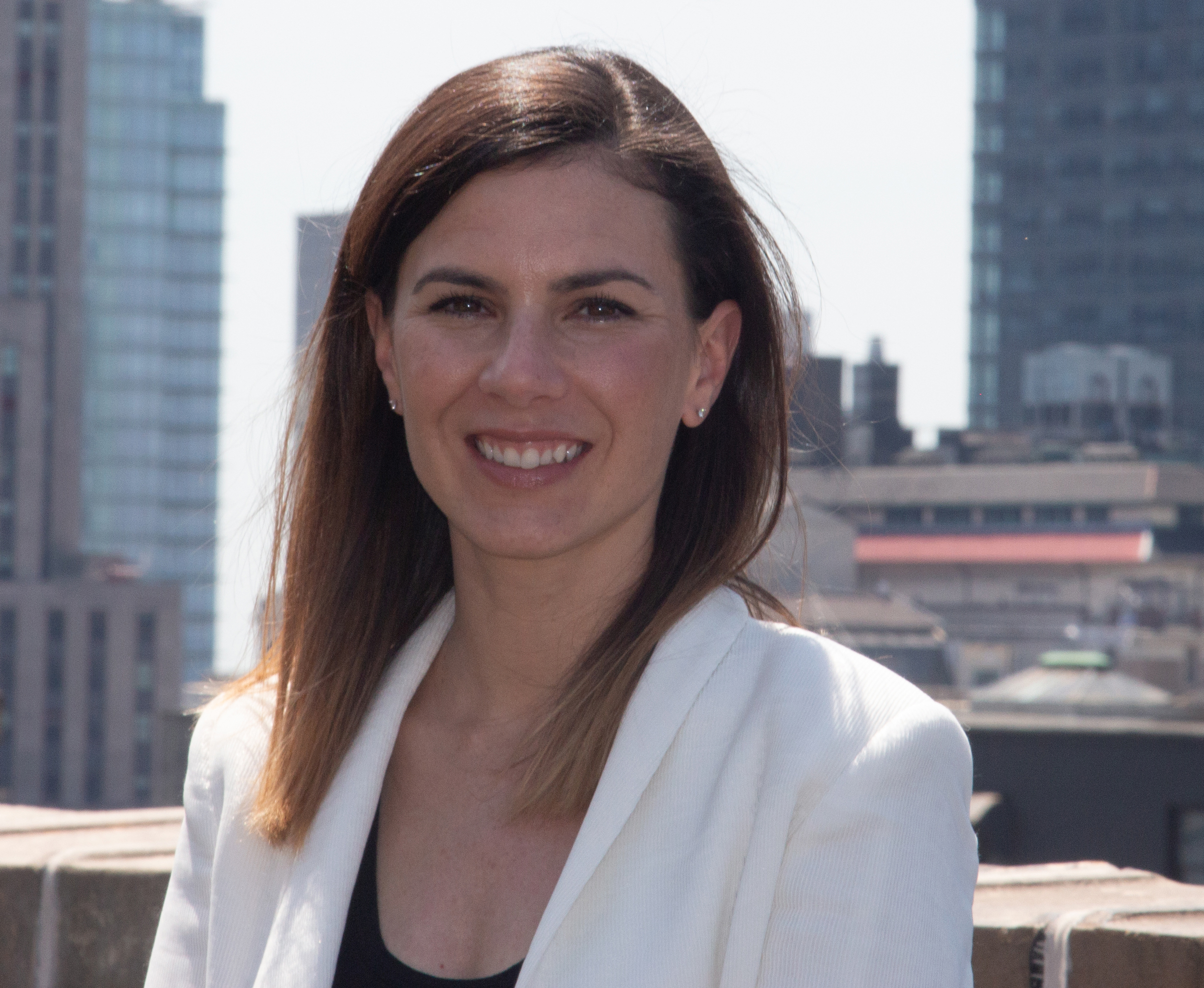
Title: Account Director, MediaCom
College: Revere College, Nashua, N.H.
Why Advertising: Menard-Badigian switched her college major from early childhood development to communications. “By nature, I feel like a problem-solver, and advertising feels like a giant word problem,” she said. “You have to dissect the context, understand the talent, use critical thinking and then, of course, use math to find an answer. The fun part is when you get to put all that together and tell a compelling story.”
First Job: As an assistant at a full-service boutique agency called Chief Media. She worked with inventors that wanted to market products, one of which was the Snuggie. “It was incredibly interesting and it gave me a really in depth understanding of business KPIs, pretty early in my career,” she said.
Recent interesting campaign: “A recent campaign of particular interest to me is one surrounding a workplace study conducted by a B2B brand,” Menard-Badigian said. “The reason this campaign is so interesting is because the intent is to provide insight and value to employees and employers as opposed to selling a service.” The study, published yearly, aims to uncover what employees value within the workplace and encourages employers to use this data to deepen their relationship with their workers. “As an advocate for the betterment of today’s blended work-life environment, in 2018, the study was published on an interactive platform, with staggered story releases tailored to specific audiences,” she said.
Favorite TV show: “I really don’t watch many things in real time but for the past couple of weeks I was watching Westworld every Sunday at 9 p.m.”
Favorite gadget or app: Apple’s Podcasts app. “I have a very long, hour long train ride to commute in, so I don’t think I could live without it,” she said. She listens to are ESPN’s 30 for 30, TED Talks and NPR’s Pop Culture Happy Hour.
NICOLE PARROS
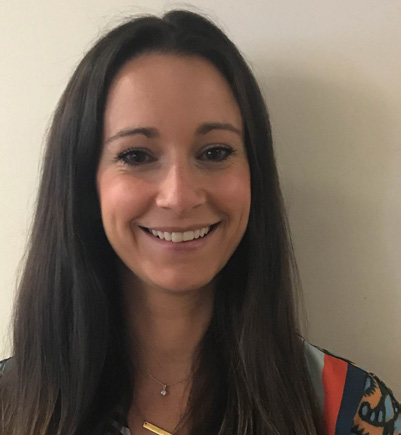
Title: Group Director, OMD
College: James Madison University, Harrisonburg, Va.
Why Advertising: Parros went to business school. “I loved marketing and the way you had the ability to be creative with a brand and understand who the consumer is, what makes them tick and what is the best way to reach them with different media and bring a brand to life,” she said. Also, her parents were in the fashion industry and worked with marketing teams and agencies.
First Job: She started in the training program at Zenith Media. She was placed as a TV buyer on the Chase account, but asked to be moved into planning.
Recent Interesting Campaign: The “TV Doctors” for Cigna was a departure for most health insurance brands, featuring actors who’ve played doctors in popular TV series, including Neil Patrick Harris and Patrick Dempsey. Media for the campaign was also different. The campaign aired during high-profile events including Golden Globes, the NFL and the Winter Olympics, Parros said. It also appeared during medical-themed shows including the premieres of Grey’s Anatomy and Chicago Med. Beyond TV, the campaign used digital video and social, retargeting TV viewers and people who looked up the actors on social media. The campaign achieved a double-digit boost in Cigna customers getting checkups in markets where the ad ran, and positive brand sentiment increased 250% in the first week of the campaign.
Favorite TV Show:Westworld. Parros said she watched the season finale live.
Favorite App or Gadget: Evzdrop, a new app which is in beta and set to launch this month. “It’s a music app, which is awesome because you get to share music in a seamless and visual way,” Parros said.
SHAUN RUDY
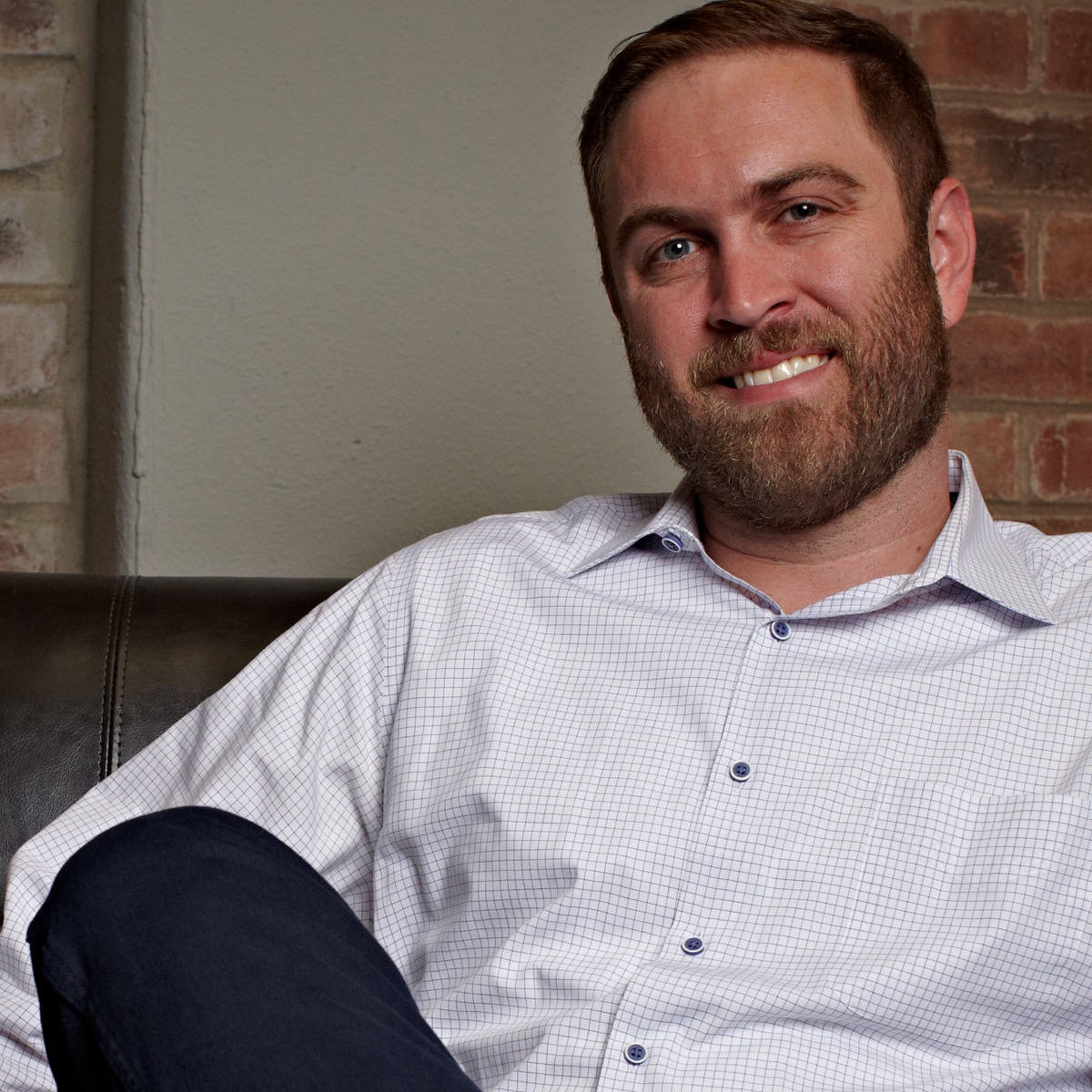
Title: Senior VP/Group Director and Strategy Lead, Kraft Heinz, Starcom
College: Syracuse University’s Newhouse School of Communications
Why Advertising: “I’d always been into creative fields,” Rudy said. “I used to write a lot when I was younger. I did things like extemporaneous speaking and improvisation. I even dabbled a little bit in acting.” Advertising seemed like a secure and stable field, although it has changed so dramatically in the past 15 to 20 years, he said. At first, Rudy thought he’d be a copywriter, but his professor told him his work was good, but not great. “I ended up taking a media course and saw that you could apply creativity to both the art and science and I was hooked.”
First Job: Assistant media buyer at Initiative Media in New York. “Investment wasn’t necessarily what I was interested in, but at the time there was a recession and I felt it was important to get my foot in the door,” he said. “My first week on the job was the week of the upfront. I’d moved to a city I didn’t know and was working till five in the morning. It wasn’t quite how I imagined starting in the business.”
Recent Interesting Campaign: Kraft Heinz is trying to stay relevant with consumers and heard, via social listening, conversations about Mayochup — a combination of two Heinz products, ketchup and mayonnaise. “We never thought to commercialize this, but maybe what we can do is put it to a poll and ask consumers what they thought of it,” Rudy said. “So not only are people voting on it, but they’re talking about your brand. In this case, they’re talking about two brands.” Mayochup got a lot of attention, mainly from free media, and it got to the point where the company is actually looking to create a product. “From the client’s perspective, the project was wildly successful for a whole host of reasons, one of the biggest is that it kept a conversation on the brand top of mind with consumers.”
Favorite TV Show: “I’m really into a lot of the true crime stuff, everything from The Staircase on Netflix to Waco,” he said. “Having lived through Waco and the O.J. trial on TV, all those docudramas seem nostalgic as a child of the ’90s.”
Favorite App or Gadget: “I love Wikipedia as a platform,” Rudy said. “It sounds like a dorky thing to say, but as a strategist, my mantra is keep calm and stay curious.” To Rudy, Wikipedia is a both a pool of information and a source of epiphanies.
KYLE RUSS
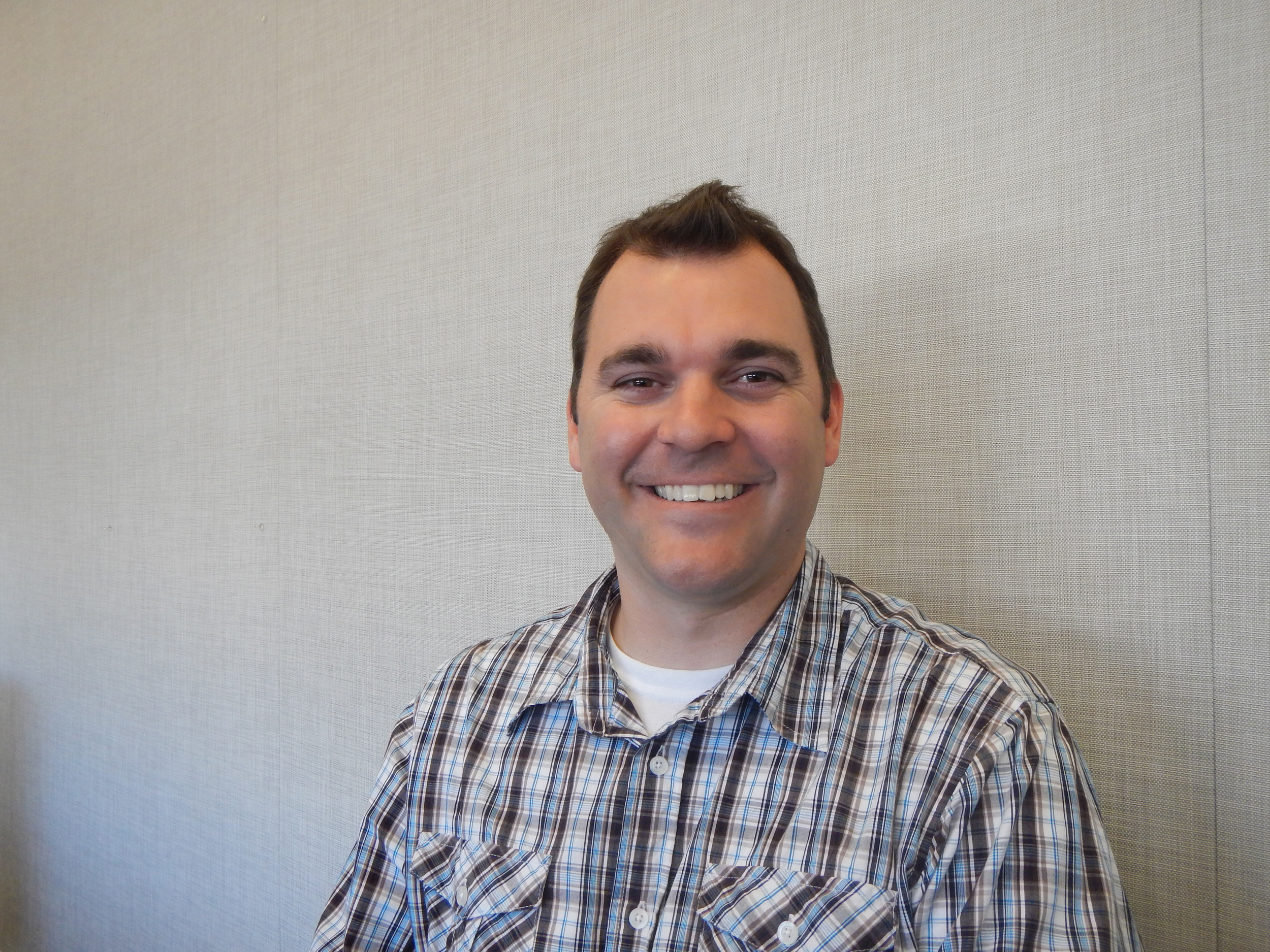
Title: VP, Strategic Planning, Blue 449
College: University of Oklahoma, Norman, Okla.
Why Advertising: Russ said he had a good mass communications law professor and initially was interested in the creative side of the business. “It got a little too competitive, but I’m a math nerd, so being a planner, the numbers kind of made sense,” he said. “Allocating the dollars came naturally. I like the people aspect of it, too. I like building the relationship, not only with clients but with the vendor partners.”
First Job: Russ was an intern at Moroch, which used to handle the McDonald’s franchisee business. “But my first job job was at Ackerman McQueen in Oklahoma City.”
Recent interesting campaign: “We helped Denny’s launch an e-commerce platform with Denny’s On Demand,” he said. “Denny’s was trying to attract millennials and age down its brand.” The campaign included integrations on ABC’s Jimmy Kimmel Live! and a promotion that offered new Denny’s on Demand users a code for free Hulu for 60 days. “We did a great job with it, not only from a mass-awareness perspective with TV and radio, but also all the way throughout the funnel,” Russ said. “You go all the way down to a purchase online, so you’re able to execute all the way from search all the way up to TV and get them to convert all the way through.” This was the first e-commerce campaign he worked on and he’s excited by the data it generated about Denny’s customers. “We will be able to do those retargeting campaigns knowing what they ordered and what they like, and to serve them messages within the right content so they’re not pushed away by a salesy gimmick,” he said.
Favorite TV Show: “I just got through watching Brockmire. I’m a huge Walking Dead fan too,” he said, adding that he mostly watches sports.
Favorite App: Russ uses Spotify and has Alexa as part of a connected home. He said Alexa helps out with fantasy football and his kids use it to add gift ideas to their birthday lists.
GENE TURNER

Title: Executive VP, Chief, Horizon Next, Horizon
College: Binghamton University, Binghamton, N.Y.
Why Advertising: “I’ve always been fascinated by advertising,” Turner said. “I was a TV junkie as a child and I always had a desire to help clients leverage media to help sell products.”
First Job: Assistant buyer on the Sony Pictures account at McCann-Erickson. A family friend was in sales at HRP and she introduced Turner to someone at McCann. “Connections are important,” said Turner, who shifted from buying to strategy after about a year.
Interesting Recent Campaign: Turner worked on a campaign for Safelite, which repairs and replaces auto windshields. “People talk a lot about top-of-mind, but for them we like to talk about back-of-mind. It’s a brand that you don’t think of until you need it,” he said. To keep the brand fresh in auto owners’ minds, Horizon uses a combination of high-impact placements on broadcast TV and cable TV to increase frequency, plus search and digital. It leveraged segmentations studies with audience and analytics tools to reach the most likely Safelite customers in the optimal environments. The approach resulted in a nice bump in consumer perception, Turner said.
Favorite TV Shows:Big Bang Theory and Seinfeld. “The old Seinfeld shows are still as funny as they were 10 years ago.”
Favorite App or Gadget: Waze. It’s a travel app that’s social and helps you find the most effective route to get from point A to point B. “It’s a great app,” he said. “It saves you speeding tickets and it saves you time.”
SOFIA WALDOW
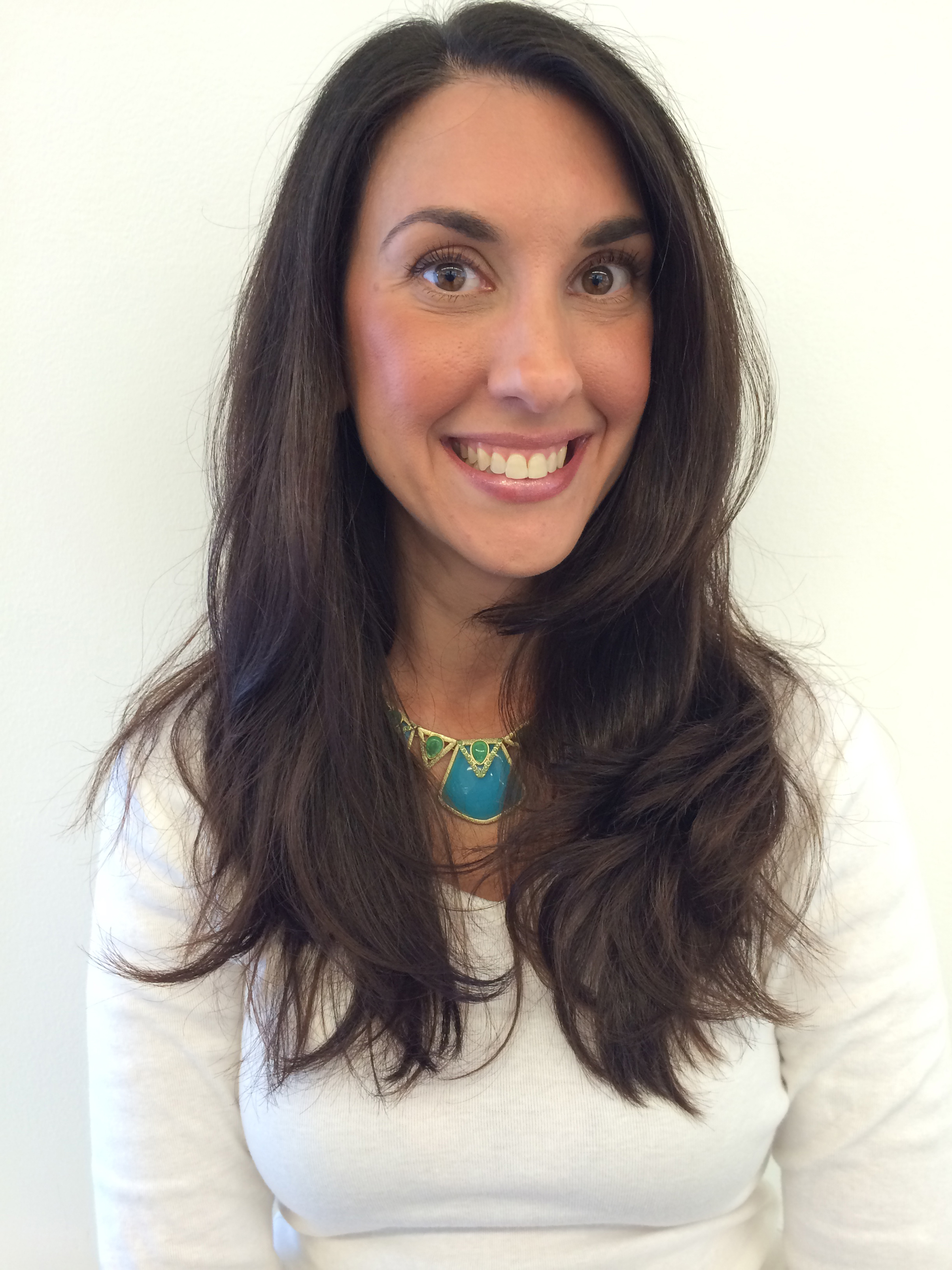
Title: Senior VP, Managing Director, Carat USA
College: LaSalle University, Philadelphia
Why Advertising: “I love commercials,” Waldow said. “They’re the best. I was always really into TV.” She also likes talking and being a people person, so got onto the communications track in school. “I realized I wasn’t going to go into broadcasting, so I focused on the business end of communications.”
First Job: After graduation, Waldow was assistant account executive at Furman Roth. “When I worked there, there was like 10 of us, which was great because it really gave me the opportunity to see things happen from start to finish,” she said. The job took her from soup to nuts, servicing clients, creating media campaigns, and creating, trafficking, invoicing and billing the ads. “I did casting at the time too. The job taught me advertising was a lot of work, which I don’t know that I appreciated. When I left Furman Roth, I decided to focus on media.”
Recent Interesting Campaign: Waldow worked on a content program for client Pfizer consumer health, which markets over-the-counter products including Advil, ChapStick, Centrum and Emergen-C. “We worked with Meredith to build up a content library for the brands we worked on and create a deeper emotional connection with consumers,” she said. The brands wanted to be more relevant so the content was designed to help people live better, healthier lives. Rather than being direct brand pitches, the content recipes, lifestyle suggestions and ways to avoid the maladies the product are designed to remedy. Most of the content was created with trusted influencers, and aimed at the people who consume media from Meredith. Pfizer had brand affinity studies attached to the program and positive sentiment and ad affinity shows positive results.
Favorite TV Show:Friends.
Favorite App or Gadget: Pocket is an app that lets the user save a story found online. The catch is you have to read it later, Waldow said. Mostly, she said she’s big on texting and doing group chats using her phone.
Jon has been business editor of Broadcasting+Cable since 2010. He focuses on revenue-generating activities, including advertising and distribution, as well as executive intrigue and merger and acquisition activity. Just about any story is fair game, if a dollar sign can make its way into the article. Before B+C, Jon covered the industry for TVWeek, Cable World, Electronic Media, Advertising Age and The New York Post. A native New Yorker, Jon is hiding in plain sight in the suburbs of Chicago.

